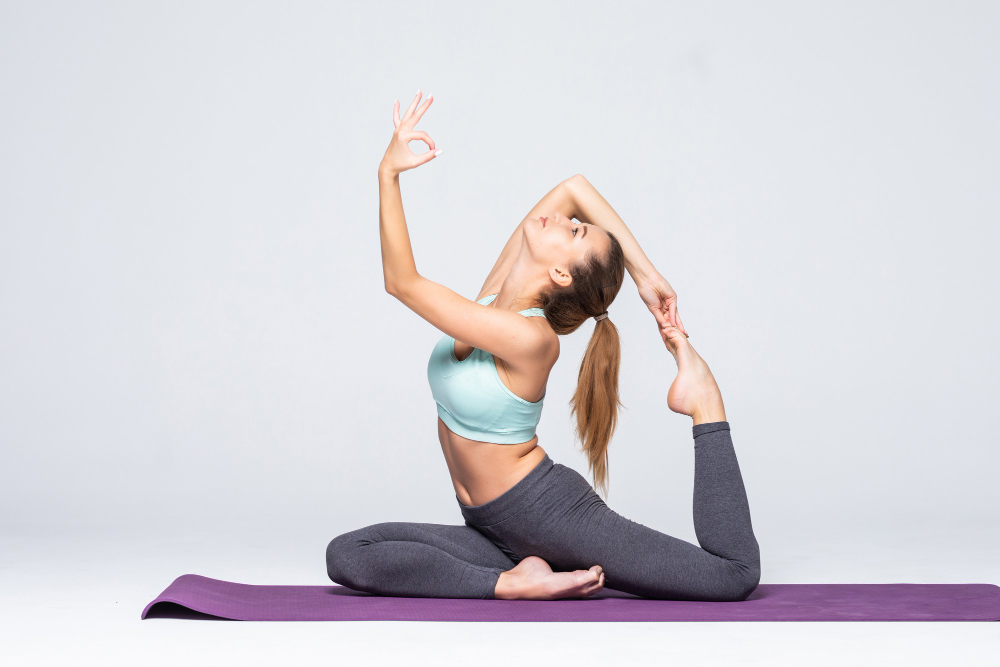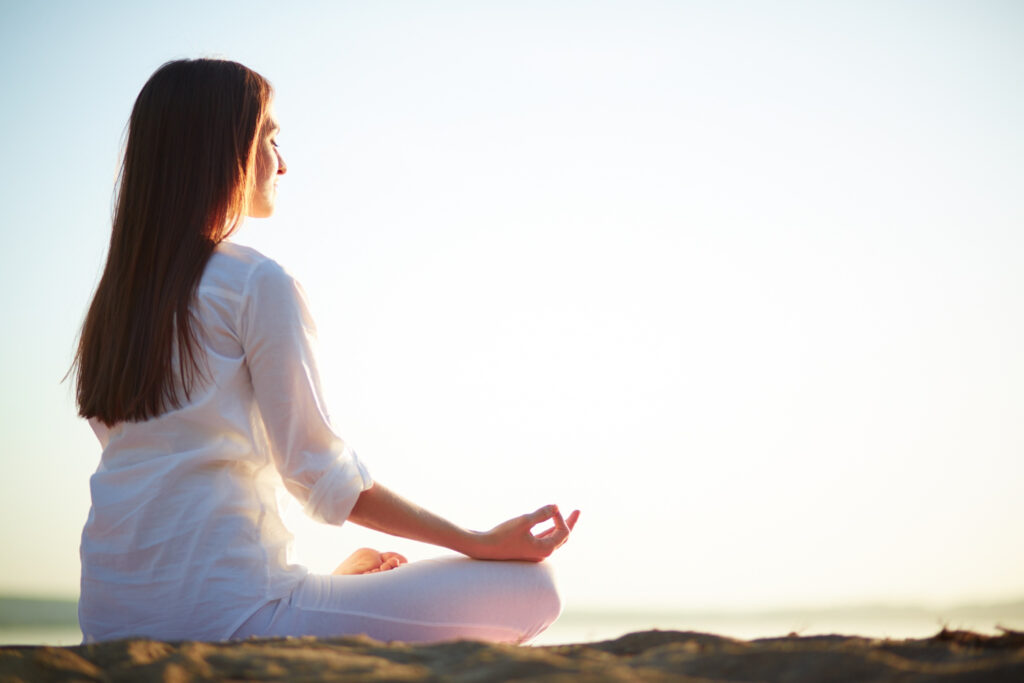Introduction: The Timeless Practice of Yoga
The Origin and Evolution of Yoga
Yoga, a practice with ancient roots, has evolved over thousands of years. Originating in India, yoga combines physical postures, breathing techniques, and meditation to promote holistic well-being. This ancient discipline has transcended cultural and geographical boundaries, becoming a global phenomenon.
Yoga in the Modern World
In today’s fast-paced world, the importance of yoga has never been more evident. As people seek balance amidst the chaos of modern life, yoga offers a sanctuary of peace and mindfulness. From urban studios to home practices, yoga has become an integral part of contemporary wellness routines.
The Physical Benefits of Yoga
Enhancing Flexibility and Strength
Yoga’s physical postures, or asanas, are designed to enhance flexibility and build strength. Regular practice stretches and tones muscles, improving range of motion and reducing the risk of injury. Strength-building poses, such as plank and warrior, develop core stability and overall body strength.
Improving Balance and Coordination
Yoga’s emphasis on alignment and balance helps improve coordination and stability. Poses like tree pose and dancer’s pose challenge balance and engage the body’s stabilizing muscles. These improvements in balance and coordination translate to better performance in daily activities and other physical pursuits.
The Mental Benefits of Yoga
Reducing Stress and Anxiety
One of yoga’s most profound benefits is its ability to reduce stress and anxiety. Through mindful breathing and meditation, yoga activates the parasympathetic nervous system, promoting relaxation and a sense of calm. This stress-relief mechanism helps individuals manage anxiety and cultivate inner peace.
Enhancing Focus and Concentration
Yoga’s meditative practices improve focus and concentration. By centering the mind and reducing distractions, yoga enhances mental clarity and cognitive function. Techniques like breath control and mindfulness meditation sharpen attention, making yoga an effective tool for boosting productivity and mental performance.
The Emotional Benefits of Yoga
Promoting Emotional Balance
Yoga fosters emotional balance by encouraging self-awareness and emotional regulation. The practice of mindfulness helps individuals observe their thoughts and feelings without judgment, promoting emotional resilience. This heightened self-awareness leads to better emotional management and a more balanced state of mind.
Building Self-Esteem and Confidence
Through consistent practice, yoga builds self-esteem and confidence. Achieving challenging poses and experiencing physical improvements boost self-belief and body positivity. The supportive and non-competitive environment of yoga cultivates a sense of accomplishment and self-worth.

The Spiritual Benefits of Yoga
Connecting with Inner Self
Yoga’s spiritual dimension involves connecting with one’s inner self. Meditation and deep breathing practices facilitate introspection and spiritual growth. This connection fosters a sense of purpose and meaning, enhancing overall life satisfaction and well-being.
Cultivating Mindfulness and Presence
Yoga promotes mindfulness, the practice of being present in the moment. Through mindful movement and meditation, yoga teaches individuals to focus on the present, reducing mental clutter and promoting inner peace. This presence of mind enhances everyday experiences and personal interactions.
Different Styles of Yoga
Hatha Yoga
Hatha yoga is a foundational style that focuses on physical postures and breath control. It’s ideal for beginners, as it emphasizes alignment and slow, deliberate movements. Hatha yoga provides a gentle introduction to the broader practice of yoga.
Vinyasa Yoga
Vinyasa yoga involves flowing sequences of poses synchronized with breath. This dynamic style enhances cardiovascular fitness and builds strength and flexibility. Vinyasa’s fluid movements and rhythmic flow make it a popular choice for those seeking an invigorating practice.
The Role of Breath in Yoga
Pranayama: The Art of Breath Control
Pranayama, or breath control, is a core component of yoga. Different pranayama techniques, such as deep breathing and alternate nostril breathing, enhance lung capacity and oxygenate the body. Pranayama also calms the mind and balances the nervous system.
Integrating Breath with Movement
In yoga, breath and movement are intimately connected. Synchronizing breath with movement enhances the flow and efficacy of the practice. This integration promotes a deeper connection between mind and body, enhancing the overall yoga experience.
The Importance of Meditation in Yoga
Finding Stillness and Inner Peace
Meditation is an integral part of yoga, providing a pathway to stillness and inner peace. Through guided meditation or silent sitting, individuals learn to quiet the mind and cultivate a sense of tranquility. This meditative practice complements the physical aspects of yoga, creating a holistic approach to well-being.
Techniques for Effective Meditation
There are various meditation techniques within yoga, each with unique benefits. Techniques such as mindfulness meditation, mantra meditation, and loving-kindness meditation offer different pathways to achieving mental clarity and emotional balance. Exploring these techniques can enhance your overall yoga practice.
Yoga for Different Life Stages
Yoga for Children
Yoga offers numerous benefits for children, including improved focus, self-discipline, and physical coordination. Kid-friendly yoga practices incorporate playful poses and activities that engage young minds and bodies. Introducing yoga at an early age fosters healthy habits and emotional resilience.
Yoga for Seniors
For seniors, yoga provides gentle exercise that enhances mobility, balance, and joint health. Adaptive yoga practices cater to varying levels of physical ability, making it accessible to older adults. Yoga also offers social engagement and stress relief, contributing to overall quality of life in later years.
Yoga for Athletes
Enhancing Athletic Performance
Athletes can benefit greatly from incorporating yoga into their training regimen. Yoga enhances flexibility, strength, and balance, all of which are crucial for athletic performance. Additionally, yoga’s focus on breath control improves endurance and stamina.
Preventing Injuries
Yoga’s emphasis on proper alignment and mindful movement helps prevent injuries. By increasing body awareness and flexibility, yoga reduces the risk of strains, sprains, and other common athletic injuries. Athletes can use yoga as a preventive measure to maintain peak physical condition.
Yoga for Stress Management
Techniques for Stress Relief
Yoga offers effective techniques for managing stress, such as deep breathing, progressive muscle relaxation, and guided imagery. These practices activate the body’s relaxation response, reducing stress hormones and promoting a sense of calm.
Creating a Stress-Free Environment
Incorporating yoga into daily life can create a stress-free environment. Establishing a regular yoga routine, even if it’s just a few minutes a day, helps manage stress and improve overall well-being. Yoga provides a sanctuary of peace amidst the demands of modern life.
Yoga for Mental Health
Combating Anxiety and Depression
Yoga has been shown to alleviate symptoms of anxiety and depression. The combination of physical movement, breath control, and meditation reduces stress and promotes emotional well-being. Yoga’s holistic approach addresses both the mind and body, making it a valuable tool for mental health.
Enhancing Cognitive Function
Regular yoga practice enhances cognitive function and mental clarity. Mindful movement and meditation improve focus, memory, and problem-solving skills. These cognitive benefits make yoga an excellent practice for maintaining mental sharpness throughout life.
Yoga for Physical Health
Improving Cardiovascular Health
Yoga supports cardiovascular health by promoting circulation, reducing blood pressure, and enhancing heart function. Dynamic styles like Vinyasa and Ashtanga provide cardiovascular benefits, while restorative yoga helps manage stress-related cardiovascular issues.
Supporting Digestive Health
Yoga’s twisting and bending poses stimulate the digestive system, promoting healthy digestion and relieving digestive issues. Practices like gentle stretching and deep breathing also help reduce stress, which can improve digestive function.
Yoga for Emotional Resilience
Developing Emotional Intelligence
Yoga fosters emotional intelligence by promoting self-awareness and empathy. Mindfulness practices help individuals recognize and understand their emotions, leading to better emotional regulation and healthier relationships.
Building Resilience Through Yoga
Yoga builds resilience by teaching individuals to stay present and cope with challenges mindfully. The practice of pushing through difficult poses and maintaining focus during meditation translates to greater resilience in everyday life.
Creating a Home Yoga Practice
Setting Up Your Space
Creating a dedicated space for yoga at home encourages regular practice. Choose a quiet, comfortable area with enough room to move freely. Incorporate elements like a yoga mat, props, and calming decor to enhance your practice space.
Establishing a Routine
Establishing a consistent yoga routine is key to reaping the benefits of the practice. Start with short, manageable sessions and gradually increase the duration and intensity. Consistency is more important than duration, so aim for regular practice, even if it’s just a few minutes a day.
Yoga and Nutrition
The Role of Diet in Yoga
Nutrition plays a vital role in supporting a yoga practice. A balanced diet provides the energy and nutrients needed for physical activity and mental clarity. Emphasize whole, unprocessed foods and stay hydrated to support your body’s needs.
Mindful Eating Practices
Yoga encourages mindful eating, which involves paying attention to hunger and fullness cues, savoring each bite, and making conscious food choices. This approach to eating enhances digestion, prevents overeating, and promotes a healthy relationship with food.
Yoga for Better Sleep
Yoga Practices for Sleep
Certain yoga practices promote better sleep by calming the mind and relaxing the body. Gentle stretches, deep breathing, and restorative poses prepare the body for rest. Practicing these techniques before bedtime can improve sleep quality and duration.
Creating a Bedtime Routine
Incorporating yoga into your bedtime routine helps signal to your body that it’s time to wind down. Establish a calming pre-sleep ritual that includes gentle yoga, dim lighting, and relaxation techniques to create a conducive environment for restful sleep.
Yoga for Chronic Pain Management
Alleviating Pain Through Yoga
Yoga offers relief for chronic pain conditions by improving flexibility, strength, and body awareness. Gentle, adaptive yoga practices can alleviate pain and improve function in conditions such as arthritis, fibromyalgia, and back pain.
Tailoring Yoga to Individual Needs
It’s important to tailor yoga practices to individual needs and limitations. Work with a knowledgeable instructor to modify poses and create a safe, effective practice that addresses your specific pain management needs.
Yoga in the Workplace
Incorporating Yoga at Work
Incorporating yoga into the workplace promotes employee well-being and productivity. Simple practices like desk stretches, breathing exercises, and short meditation breaks reduce stress and improve focus. Creating a wellness culture at work enhances overall job satisfaction.
Benefits for Employees and Employers
Yoga in the workplace benefits both employees and employers. Employees experience reduced stress, improved health, and increased job satisfaction. Employers benefit from higher productivity, lower absenteeism, and a positive work environment.
Yoga and Community
Building Connections Through Yoga
Yoga fosters a sense of community and connection. Group classes and workshops provide opportunities to meet like-minded individuals and build supportive relationships. These connections enhance the overall yoga experience and promote a sense of belonging.
Yoga for Social Impact
Yoga can also be a tool for social impact. Community yoga programs and outreach initiatives bring the benefits of yoga to underserved populations. These efforts promote wellness and empowerment, making a positive difference in society.
The Future of Yoga
Evolving Practices and Innovations
The practice of yoga continues to evolve, incorporating new techniques and innovations. Trends like virtual yoga classes, fusion styles, and scientific research on yoga’s benefits are shaping the future of the practice. Staying open to these changes enhances your yoga journey.
Yoga’s Enduring Relevance
Despite its evolution, the core principles of yoga remain timeless and relevant. As a practice that promotes holistic well-being, yoga will continue to be a valuable tool for navigating the complexities of modern life. Embracing yoga’s principles ensures its enduring relevance for generations to come.
Conclusion: Embracing Yoga for a Balanced Life
The Lifelong Benefits of Yoga
Yoga offers lifelong benefits for physical, mental, emotional, and spiritual well-being. By integrating yoga into your daily life, you can achieve greater balance, resilience, and inner peace. The journey of yoga is one of continuous growth and transformation.
Starting Your Yoga Journey
Starting your yoga journey is as simple as taking the first step. Whether you’re a beginner or an experienced practitioner, there’s always room to deepen your practice and explore new dimensions of yoga. Embrace the practice with an open heart and mind, and discover the profound impact yoga can have on your life.
FAQs about Yoga and Its Importance in Today’s Life
1. What are the main benefits of practicing yoga?
Yoga offers numerous benefits, including improved flexibility, strength, balance, mental clarity, emotional resilience, and stress reduction.
2. How often should I practice yoga to see results?
Consistency is key. Practicing yoga at least 2-3 times per week can lead to noticeable improvements in physical and mental well-being.
3. Can beginners do yoga?
Yes, yoga is accessible to beginners. Start with gentle classes or beginner-friendly styles like Hatha yoga and gradually progress as you gain confidence.
4. Do I need special equipment for yoga?
All you need is a yoga mat and comfortable clothing. Props like blocks and straps can be helpful but are not essential for beginners.
5. How does yoga help with stress management?
Yoga’s combination of physical postures, breath control, and meditation activates the body’s relaxation response, reducing stress and promoting calmness.
6. Can yoga help with chronic pain?
Yes, yoga can alleviate chronic pain by improving flexibility, strength, and body awareness. Gentle, adaptive practices are particularly beneficial.
7. What is the best time of day to practice yoga?
The best time to practice yoga is when it fits into your schedule. Morning practices energize the body, while evening practices promote relaxation.
8. Is yoga a religious practice?
Yoga has spiritual roots but is not inherently religious. It can be practiced by individuals of all faiths and beliefs as a form of physical and mental exercise.
9. How can yoga improve my sleep?
Yoga practices like gentle stretching, deep breathing, and restorative poses before bedtime can improve sleep quality and duration.
10. Can children practice yoga?
Yes, yoga is beneficial for children, promoting physical coordination, focus, and emotional resilience. Kid-friendly practices make yoga engaging for young minds.





